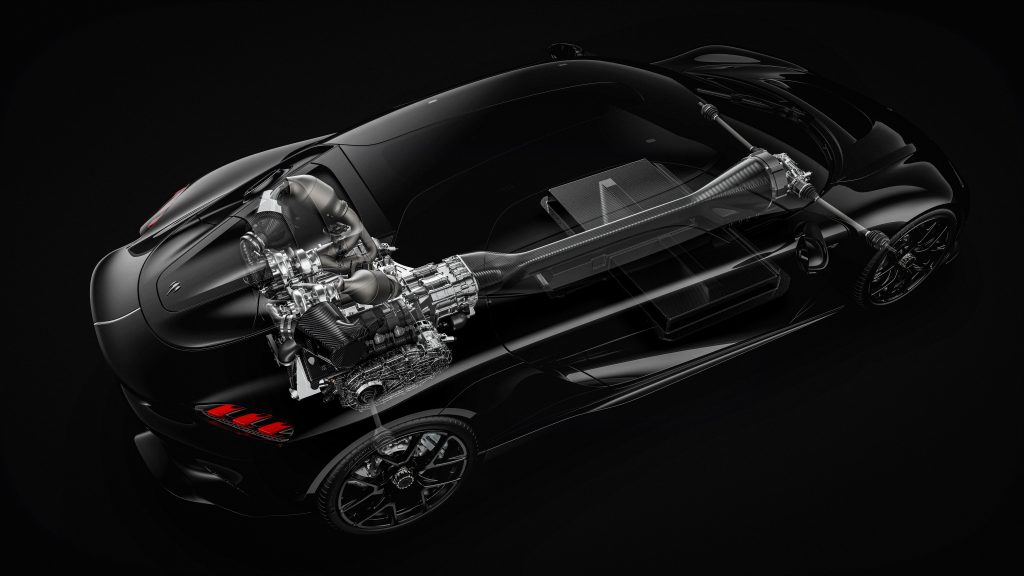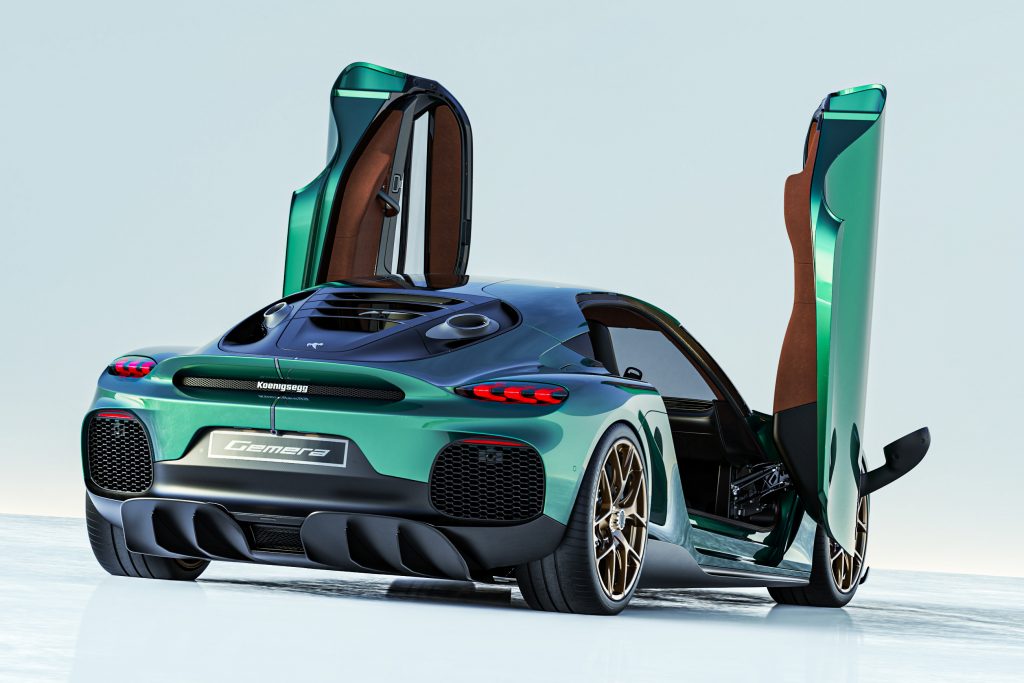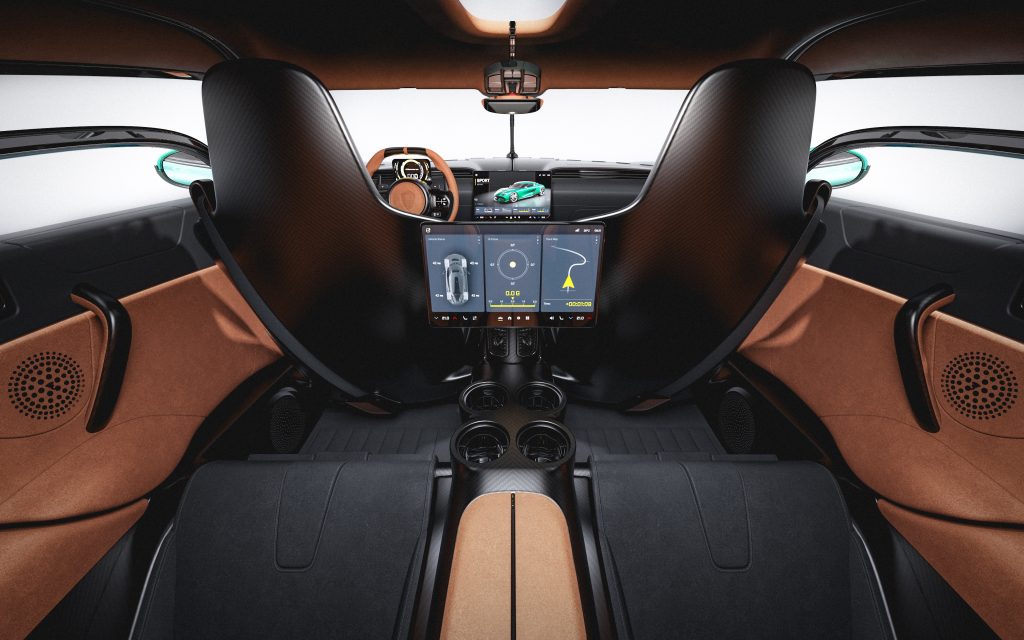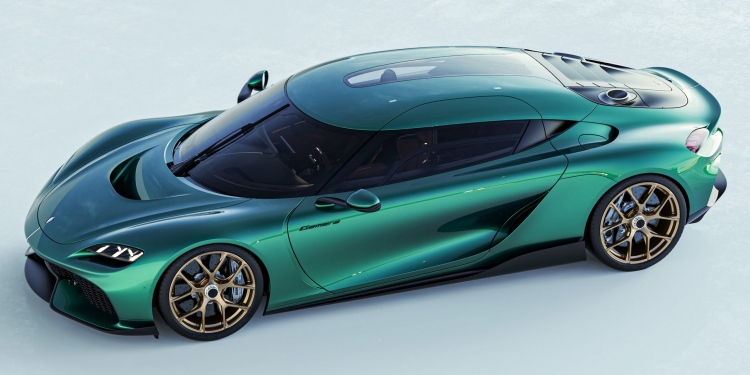Having been revealed amid the throes of the COVID-19 pandemic in March 2020, the Koenigsegg Gemera has finally made its production-spec debut. A marvel of engineering, the hybrid supercar fits four seats, a mid-mounted petrol engine, an electric motor, four-wheel drive and massive twin scissor doors into its frame.
In the intervening three years, Koenigsegg has changed the mechanicals quite a bit. Originally, the Gemera was supposed to have a twin-turbo three-cylinder engine, three electric motors and a single-ratio direct-drive transmission. That three-pot mill, christened the Tiny Friendly Giant (TFG), is still there—it’s a 2.0-litre Freevalve (meaning it uses pneumatic actuators rather than camshafts to control the valves) unit that produces a heady 600hp and 600Nm of torque.

But in place of the direct-drive setup is a new Light Speed Tourbillon Transmission, a compact version of the nine-speed gearbox found in the Jesko. It comes with no less than seven clutches, letting drivers jump to virtually any gear without any torque interruption or delay. It also allows the Gemera to have a lower electric output, because there’s less need for electrical assistance to move the car at lower speeds.
As such, the Swedish carmaker is able to substitute the three motors for a single big one driving the front wheels. That’s not to say it’s not powerful—called the Dark Matter, it produces a whopping 800hp and 1,250Nm, making it the most powerful electric motor fitted to a production car; it’s also the first six-phase motor built for automotive use. The end result is an astonishing total output of 1,400hp and 1,850Nm. Juicing the motor is a 14kWh, 850V battery.


That’s not all—Koenigsegg has even managed to create a V8 version of the Gemera, swapping out the three-pot for a 5.0-litre engine from the aforementioned Jesko. It’s been adapted to fit the tight confines of the engine bay by fitting the twin turbos in between the two banks of cylinders. The resulting “hot vee” V8 still manages to pump out 1,500hp and 1,500Nm, resulting in a total output of—are you sitting down?—2,300hp and 2,750Nm. Let that sink in.
Even with all those components in place, Koenigsegg has managed to fit not just those four (heated and power-adjustable) seats but also a 200-litre boot (big enough to fit four full-sized carry-ons, the company said), a massive 114-litre fuel tank, two screens at the front and rear and even heated and cooled cupholders. You’ll still have to wait a while to get one, however—production at the newly-built Gripen Atelier is only due to start at the end of 2024, with deliveries kicking off in early 2025.








